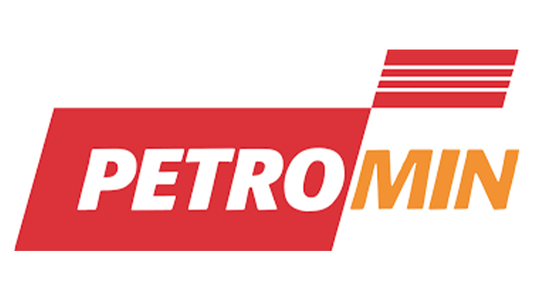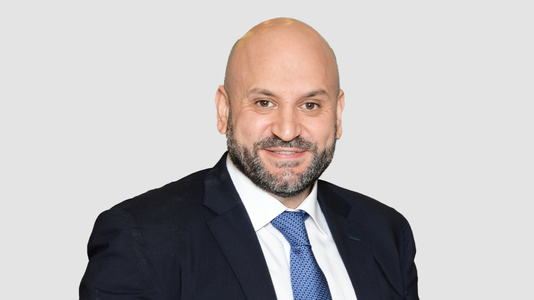

HUSSEIN M. DAJANI
Group Chief Marketing & Customer Centricity Officer
Petromin Corporation
During his 21+years career, Hussein M. Dajani, has been able to demonstrate astute leadership, career growth, corporate success, strategic thinking as well as building a personal brand (through thought leadership and conference presentations) – all of which were achieved by working for great companies and with great talents. He is currently Group Chief Marketing & Customer Centricity Officer, Petromin Saudi Arabia. Over the past few years, Hussein has worked with the likes of WPP and Publicis overseeing some of their largest regional clients (such as STC, Vodafone, Nokia, Visa and HSBC) He ws voted as among the top 200 CX leaders globally to watch in 2021 & 2022, and received the BTX Top Executive Award 2021, BIZZNXT AWARDS 2022, and lately CX Professional of the year 2022. Hussein's core expertise lies in the Digital Marketing and Tech space, evolving over the years from a pure player marketeer. Starting his career with some of the worlds' greatest communication companies, prior to joining Petromin he served at Deloitte Digital as a Partner for the Advertising, Marketing, CX and Commerce market offering, He was the GM for Digital & CX Transformation with Nissan Motor Co. for Africa, Middle East, India, Turkey, and Oceania overseeing some of the most dramatic customer transformations the company has had to go through in recent times. His contribution to the organization was recognized by senior leadership and lead him to winning the AMIEO Chairperson Nissan Way Award in July 2021.
In this Executive Perspective, Hussein M. Dajani, Group Chief Marketing and Customer Centricity Officer at Petromin Corporation, explores how artificial intelligence is reshaping advertising models, creative processes, and the strategies of the Big Seven agency holding companies, drawing on exclusive insights from Cannes Lions and C-suite leaders on the frontlines of this transformation.
Cannes Lions International Festival of Creativity 2025 was a watershed moment for advertising’s AI revolution. Under the Riviera sun, festival-goers buzzed about generative AI on every stage and cabana. For the first time, awards entrants had to explicitly disclose any AI used in their work, and AI-human creative collaboration dominated panel discussions.
Tech giants demoed new AI creative tools while industry leaders stressed that AI is a “co-pilot, not a replacement” for human creativity. In executive suites, the tone had shifted: after years of hype, the question was no longer “Can we use AI?” but “How fast can we scale it across everything we do?” Artificial intelligence is reshaping advertising models, creative processes, and the strategies of the Big Seven agency holding companies.
How AI Is Disrupting Advertising
AI is shaking up advertising across the board. Three disruption vectors stand out, each delivering striking gains in speed, scale, or effectiveness:
- Creative Production: Generative AI is turbocharging content creation. In one case, a consumer goods brand found AI made content creation 14 times faster while cutting human process steps by 30%. This translates to leaner creative teams spending 20–30% fewer man-hours on production tasks without sacrificing quality. Brainstorms that once took days – drafting copy, designing visuals, iterating formats – now happen in hours, with AI handling the heavy lifting and humans refining the big ideas.
- Media Buying: AI-driven platforms are executing media buys with superhuman speed and precision. The Trade Desk’s KOA engine, for example, now evaluates up to 15 million ad impressions per second, automatically bidding on and optimizing placements in real time. No human trader could match this. Algorithms crunch millions of signals (audience behavior, context, pricing) in a flash, maximizing ROI on each impression. The result is always-on campaign tuning that squeezes more value from media budgets and reacts to market changes in milliseconds.
- Hyper-Personalization: AI is enabling one-to-one marketing at scale, finally delivering on the promise of “the right ad for the right person at the right time.” A striking regional example comes from SEPHORA Middle East: by leveraging AI-driven targeting and content, Sephora achieved a 67% increase in sales in the UAE, compared to its usual strategy, using Meta's Advantage+ AI tool for personalized shopping ads. Across industries, brands are seeing double-digit uplifts by having AI tailor creative and offers to each consumer’s preferences. From makeup to mobile plans, machine learning models can dynamically assemble thousands of ad variations for different segments, languages, and moments – a task impossible to do manually at scale.
These early wins illustrate why ad executives are treating AI not as a shiny object, but as a genuine disruptor of how ads are made and delivered. As Publicis Groupe CEO Arthur Sadoun quipped on stage at Cannes, “We’re not in the advertising business hours anymore, we’re in the advertising seconds business.” The old timelines and labor models are being upended.
Why AI Disruption Is Inexorable
Several forces are making AI’s advance in advertising unstoppable:
- Tech Platforms Automating the Work: The biggest digital ad platforms (Google, Meta, Amazon, TikTok) are baking AI into their ad tools, effectively automating much of the media and creative process. Meta CEO Mark Zuckerberg ruffled feathers ahead of Cannes by suggesting AI will “essentially automate the ad business.” “You tell us your objective, connect your bank account – you don’t need any creative, you don’t need any targeting… we spit out the results,” he said. In other words, the platforms aim to handle everything from ad creation to targeting and optimization via AI. This “automating doneness” means agencies must adopt AI or risk being bypassed.
- Client Demand for Efficiency and ROI: CMOs and brand clients, under pressure for better ROI, are pushing their agencies to leverage AI for productivity gains. If AI can cut creative costs by 20% or drive 40% better targeting efficiency, savvy clients want those benefits passed along. In a tool-driven marketing world, brands now expect agencies to use every algorithm at their disposal to “do more with less” – whether that’s automating A/B tests or using AI analytics to squeeze extra performance from campaigns. The message from clients is clear: show me the efficiency or I’ll find someone who can. This is accelerating real AI deployments over experimental tinkering.
- AI as Table Stakes: In 2023, experimenting with generative AI was cutting-edge; by 2025 it’s fast becoming a baseline capability. As Forrester noted, embracing AI’s disruptive power is now “a requirement, not an option,” especially for agencies. What was once an edge differentiator is now a license to play. Marketers increasingly believe that without AI, you simply can’t compete in modern advertising. Internal mindsets have shifted from “Should we try AI?” to “We have to be good at AI, period.” The holding companies are racing to infuse AI into all offerings – those that lag risk irrelevance.
Taken together, these dynamics mean AI’s march through the industry is irreversible. Every major player – platforms, clients, consultancies, startups – is aligning behind AI. The focus has moved from if to how: How to deploy at scale, how to govern it, and how to win with it. As one agency CEO put it at Cannes, “We’ve crossed the Rubicon – now it’s adapt or die.”
